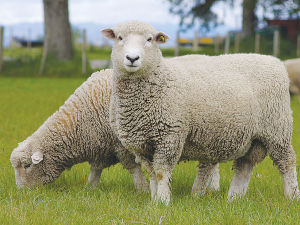It's all about economics
OPINION: According to media reports, the eye-watering price of butter has prompted Finance Minister Nicola Willis to ask for a 'please explain' from her former employer Fonterra.
 For the first time since the 1850s, the ratio of sheep to people in New Zealand has fallen below five to one.
For the first time since the 1850s, the ratio of sheep to people in New Zealand has fallen below five to one.
There are fewer dairy cattle, sheep, and deer in New Zealand’s paddocks.
That’s according to the results of the five-yearly Agricultural Production Census 2022 recently released by Stats NZ.
The 2022 survey of farming production and practices reveals small decreases in the national dairy herd and sheep flock, with dairy cattle numbers down 1% from the previous year.
Stats NZ general manager of economic and environment insights Jason Attewell says the total number of dairy cattle at June 2022 was 6.1 million.
“This is 8% lower than in 2014 when the total dairy cattle herd peaked at 6.7 million,” Attewell says.
While the dairy cattle herd decreased in both the North and South Islands, the North Island saw a much larger fall.
Across the North Island dairy cattle numbers fell by 11% (431,000) compared with the 2014 peak.
In contrast, South Island dairy cattle numbers fell only 5% (131,00) compared with 2014.
At the same time, the national sheep flock totalled 25.3 million at June 2022, a drop of 400,000 sheep compared to the previous year, a 2% decrease.
Despite total sheep numbers continuing to fall, 22 million lambs were tailed in the 2021-22 year.
“The ratio of sheep to people dropped below five to one in 2022, for the first time since the 1850s, when national sheep numbers were first recorded,” Attewell says.
“In 1982, New Zealand sheep numbers famously sat at 22 per person,” he adds.
“Australia currently has three times as many sheep as New Zealand, though their ratio is only around three sheep to every Aussie.”
Meanwhile, the number of beef cattle has stabilised at approximately 3.9 million.
Beef cattle numbers, which peaked at 6.3 million in the 1970s, totalled 3.5 million in 2016, a historic low.
More recently, the number has stabilised and totalled 3.9 million in both 2019 and June 2022.
The Agricultural Production Census 2022 provides a detailed snapshot of the country’s production and practices. The collection of data from farms, orchards, and forests across New Zealand gives a clearer picture of our largest export sector, primary production.
“Stats NZ thanks the tens of thousands of farmers, growers, and foresters who completed the Agricultural Production Census 2022. Their input helps shine a light on the importance of the industry in Aotearoa and will help shape its future,” Attewell says.
An independent report, prepared for Alliance farmer shareholders is backing the proposed $250 million joint venture investment by Irish company Dawn Meats Group.
Whangarei field service technician, Bryce Dickson has cemented his place in John Deere’s history, becoming the first ever person to win an award for the third time at the annual Australian and New Zealand Technician of the Year Awards, announced at a gala dinner in Brisbane last night.
NZPork has appointed Auckland-based Paul Bucknell as its new chair.
The Government claims to have delivered on its election promise to protect productive farmland from emissions trading scheme (ETS) but red meat farmers aren’t happy.
Foot and Mouth Disease outbreaks could have a detrimental impact on any country's rural sector, as seen in the United Kingdom's 2000 outbreak that saw the compulsory slaughter of over six million animals.
The Ministry for the Environment is joining as a national award sponsor in the Ballance Farm Environment Awards (BFEA from next year).

OPINION: For years, the ironically named Dr Mike Joy has used his position at Victoria University to wage an activist-style…
OPINION: A mate of yours truly has had an absolute gutsful of the activist group SAFE.